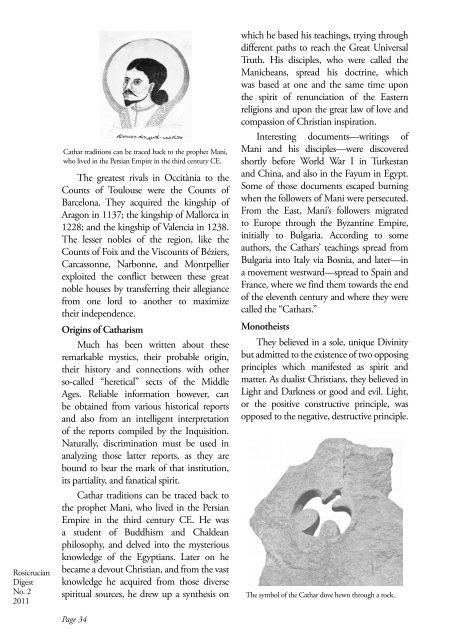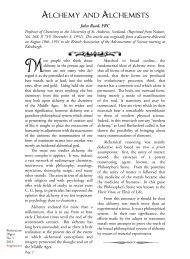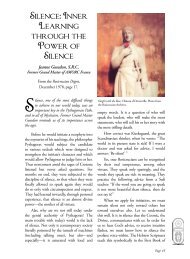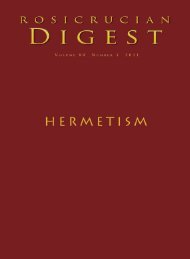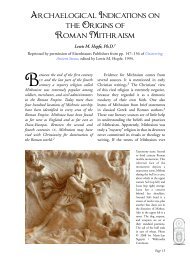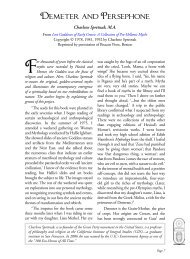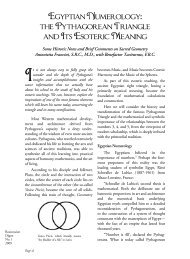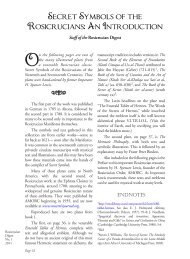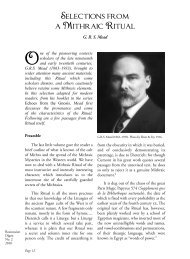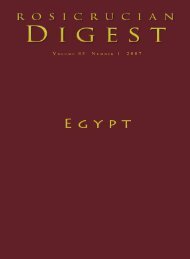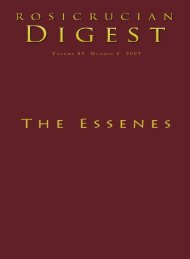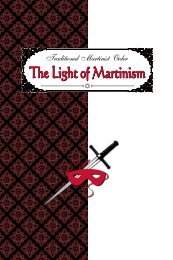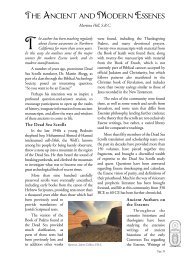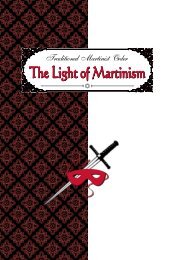Rosicrucian Digest Vol 89 No 2 2011 Gnosticism - Rosicrucian Order
Rosicrucian Digest Vol 89 No 2 2011 Gnosticism - Rosicrucian Order
Rosicrucian Digest Vol 89 No 2 2011 Gnosticism - Rosicrucian Order
You also want an ePaper? Increase the reach of your titles
YUMPU automatically turns print PDFs into web optimized ePapers that Google loves.
<strong>Rosicrucian</strong><br />
<strong>Digest</strong><br />
<strong>No</strong>. 2<br />
<strong>2011</strong><br />
Cathar traditions can be traced back to the prophet Mani,<br />
who lived in the Persian Empire in the third century CE.<br />
The greatest rivals in Occitània to the<br />
Counts of Toulouse were the Counts of<br />
Barcelona. They acquired the kingship of<br />
Aragon in 1137; the kingship of Mallorca in<br />
1228; and the kingship of Valencia in 1238.<br />
The lesser nobles of the region, like the<br />
Counts of Foix and the Viscounts of Béziers,<br />
Carcassonne, Narbonne, and Montpellier<br />
exploited the conflict between these great<br />
noble houses by transferring their allegiance<br />
from one lord to another to maximize<br />
their independence.<br />
Origins of Catharism<br />
Much has been written about these<br />
remarkable mystics, their probable origin,<br />
their history and connections with other<br />
so-called “heretical” sects of the Middle<br />
Ages. Reliable information however, can<br />
be obtained from various historical reports<br />
and also from an intelligent interpretation<br />
of the reports compiled by the Inquisition.<br />
Naturally, discrimination must be used in<br />
analyzing those latter reports, as they are<br />
bound to bear the mark of that institution,<br />
its partiality, and fanatical spirit.<br />
Cathar traditions can be traced back to<br />
the prophet Mani, who lived in the Persian<br />
Empire in the third century CE. He was<br />
a student of Buddhism and Chaldean<br />
philosophy, and delved into the mysterious<br />
knowledge of the Egyptians. Later on he<br />
became a devout Christian, and from the vast<br />
knowledge he acquired from those diverse<br />
spiritual sources, he drew up a synthesis on<br />
Page 34<br />
which he based his teachings, trying through<br />
different paths to reach the Great Universal<br />
Truth. His disciples, who were called the<br />
Manicheans, spread his doctrine, which<br />
was based at one and the same time upon<br />
the spirit of renunciation of the Eastern<br />
religions and upon the great law of love and<br />
compassion of Christian inspiration.<br />
Interesting documents—writings of<br />
Mani and his disciples—were discovered<br />
shortly before World War I in Turkestan<br />
and China, and also in the Fayum in Egypt.<br />
Some of those documents escaped burning<br />
when the followers of Mani were persecuted.<br />
From the East, Mani’s followers migrated<br />
to Europe through the Byzantine Empire,<br />
initially to Bulgaria. According to some<br />
authors, the Cathars’ teachings spread from<br />
Bulgaria into Italy via Bosnia, and later—in<br />
a movement westward—spread to Spain and<br />
France, where we find them towards the end<br />
of the eleventh century and where they were<br />
called the “Cathars.”<br />
Monotheists<br />
They believed in a sole, unique Divinity<br />
but admitted to the existence of two opposing<br />
principles which manifested as spirit and<br />
matter. As dualist Christians, they believed in<br />
Light and Darkness or good and evil. Light,<br />
or the positive constructive principle, was<br />
opposed to the negative, destructive principle.<br />
The symbol of the Cathar dove hewn through a rock.


